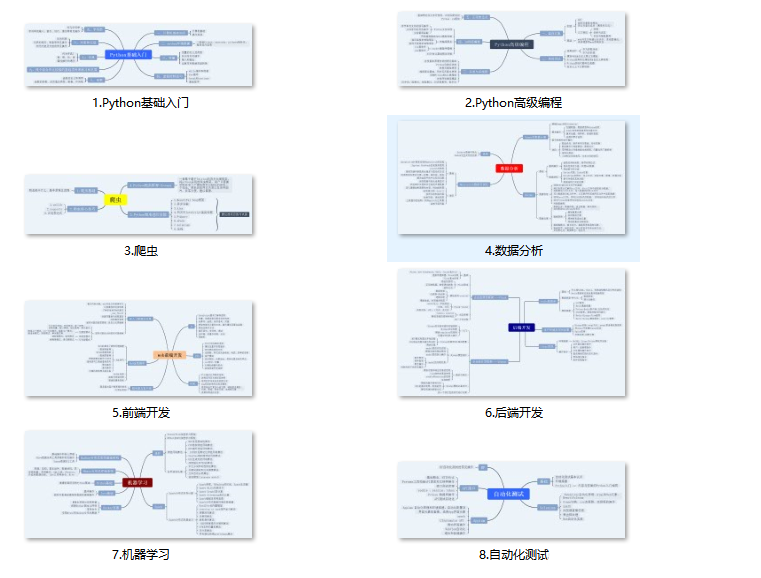LeetCode-数据库-MySQL题解(11-20)
题目来自于leetcode,数据库模块,可以一起练习:LeetCode-database-OJ
题目来自于leetcode,数据库模块,可以一起练习:LeetCode-database-OJ
目录
196. 删除重复的电子邮箱
编写一个 SQL 查询,来删除 Person 表中所有重复的电子邮箱,重复的邮箱里只保留 Id 最小 的那个。
| Id | |
|---|---|
| 1 | john@example.com |
| 2 | bob@example.com |
| 3 | john@example.com |
Id 是这个表的主键。
例如,在运行你的查询语句之后,上面的 Person 表应返回以下几行:
| Id | |
|---|---|
| 1 | john@example.com |
| 2 | bob@example.com |
提示:
执行 SQL 之后,输出是整个 Person 表。
使用 delete 语句。
DELETE p1
FROM Person p1,Person p2
WHERE p1.Email = p2.Email AND p1.Id > p2.Id197. 上升的温度
给定一个 Weather 表,编写一个 SQL 查询,来查找与之前(昨天的)日期相比温度更高的所有日期的 Id。
| Id(INT) | RecordDate(DATE) | Temperature(INT) |
|---|---|---|
| 1 | 2015-01-01 | 10 |
| 2 | 2015-01-02 | 25 |
| 3 | 2015-01-03 | 20 |
| 4 | 2015-01-04 | 30 |
例如,根据上述给定的 Weather 表格,返回如下 Id:
| Id |
|---|
| 2 |
| 4 |
select w1.Id
from Weather w1,Weather w2
where datediff(w1.RecordDate, w2.RecordDate) = 1 and w2.Temperature<w1.Temperature262. 行程和用户
Trips 表中存所有出租车的行程信息。每段行程有唯一键 Id,Client_Id 和 Driver_Id 是 Users 表中 Users_Id 的外键。Status 是枚举类型,枚举成员为 (‘completed’, ‘cancelled_by_driver’, ‘cancelled_by_client’)。
| Id | Client_Id | Driver_Id | City_Id | Status | Request_at |
|---|---|---|---|---|---|
| 1 | 1 | 10 | 1 | completed | 2013-10-01 |
| 2 | 2 | 11 | 1 | cancelled_by_driver | 2013-10-01 |
| 3 | 3 | 12 | 6 | completed | 2013-10-01 |
| 4 | 4 | 13 | 6 | cancelled_by_client | 2013-10-01 |
| 5 | 1 | 10 | 1 | completed | 2013-10-02 |
| 6 | 2 | 11 | 6 | completed | 2013-10-02 |
| 7 | 3 | 12 | 6 | completed | 2013-10-02 |
| 8 | 2 | 12 | 12 | completed | 2013-10-03 |
| 9 | 3 | 10 | 12 | completed | 2013-10-03 |
| 10 | 4 | 13 | 12 | cancelled_by_driver | 2013-10-03 |
Users 表存所有用户。每个用户有唯一键 Users_Id。Banned 表示这个用户是否被禁止,Role 则是一个表示(‘client’, ‘driver’, ‘partner’)的枚举类型。
| Users_Id | Banned | Role |
|---|---|---|
| 1 | No | client |
| 2 | Yes | client |
| 3 | No | client |
| 4 | No | client |
| 10 | No | driver |
| 11 | No | driver |
| 12 | No | driver |
| 13 | No | driver |
写一段 SQL 语句查出 2013年10月1日 至 2013年10月3日 期间非禁止用户的取消率。基于上表,你的 SQL 语句应返回如下结果,取消率(Cancellation Rate)保留两位小数。
取消率的计算方式如下:(被司机或乘客取消的非禁止用户生成的订单数量) / (非禁止用户生成的订单总数)
| Day | Cancellation Rate |
|---|---|
| 2013-10-01 | 0.33 |
| 2013-10-02 | 0.00 |
| 2013-10-03 | 0.50 |
595. 大的国家
这里有张 World 表
| name | continent | area | population | gdp |
|---|---|---|---|---|
| Afghanistan | Asia | 652230 | 25500100 | 20343000 |
| Albania | Europe | 28748 | 2831741 | 12960000 |
| Algeria | Africa | 2381741 | 37100000 | 188681000 |
| Andorra | Europe | 468 | 78115 | 3712000 |
| Angola | Africa | 1246700 | 20609294 | 100990000 |
如果一个国家的面积超过300万平方公里,或者人口超过2500万,那么这个国家就是大国家。
编写一个SQL查询,输出表中所有大国家的名称、人口和面积。
例如,根据上表,我们应该输出:
| name | population | area |
|---|---|---|
| Afghanistan | 25500100 | 652230 |
| Algeria | 37100000 | 2381741 |
SELECT `name`,population,`area`
FROM World
WHERE population>=25000000 or `area`>=3000000SELECT name, population, area
FROM world
WHERE area > 3000000
UNION
SELECT name, population, area
FROM world
WHERE population > 25000000596. 超过5名学生的课
有一个courses 表 ,有: student (学生) 和 class (课程)。
请列出所有超过或等于5名学生的课。
| student | class |
|---|---|
| A | Math |
| B | English |
| C | Math |
| D | Biology |
| E | Math |
| F | Computer |
| G | Math |
| H | Math |
| I | Math |
输出:
| class |
|---|
| Math |
Note:
学生在每个课中不应被重复计算
SELECT class
FROM courses
GROUP BY class
HAVING COUNT(distinct(student))>=5601. 体育馆的人流量
X 市建了一个新的体育馆,每日人流量信息被记录在这三列信息中:序号 (id)、日期 (visit_date)、 人流量 (people)。
请编写一个查询语句,找出人流量的高峰期。高峰期时,至少连续三行记录中的人流量不少于100。
例如,表 stadium:
| id | visit_date | people |
|---|---|---|
| 1 | 2017-01-01 | 10 |
| 2 | 2017-01-02 | 109 |
| 3 | 2017-01-03 | 150 |
| 4 | 2017-01-04 | 99 |
| 5 | 2017-01-05 | 145 |
| 6 | 2017-01-06 | 1455 |
| 7 | 2017-01-07 | 199 |
| 8 | 2017-01-08 | 188 |
对于上面的示例数据,输出为:
| id | visit_date | people |
|---|---|---|
| 5 | 2017-01-05 | 145 |
| 6 | 2017-01-06 | 1455 |
| 7 | 2017-01-07 | 199 |
| 8 | 2017-01-08 | 188 |
提示:
每天只有一行记录,日期随着 id 的增加而增加。
SELECT DISTINCT s4.id,s4.visit_date,s4.people
FROM stadium s1,stadium s2,stadium s3,stadium s4
WHERE s1.id+1=s2.id AND s2.id+1=s3.id
AND s1.people>=100 AND s2.people>=100 AND s3.people>=100
AND s4.id IN (s1.id,s2.id,s3.id)620. 有趣的电影
某城市开了一家新的电影院,吸引了很多人过来看电影。该电影院特别注意用户体验,专门有个 LED显示板做电影推荐,上面公布着影评和相关电影描述。
作为该电影院的信息部主管,您需要编写一个 SQL查询,找出所有影片描述为非 boring (不无聊) 的并且 id 为奇数 的影片,结果请按等级 rating 排列。
例如,下表 cinema:
| id | movie | description | rating |
|---|---|---|---|
| 1 | War | great 3D | 8.9 |
| 2 | Science | fiction | 8.5 |
| 3 | irish | boring | 6.2 |
| 4 | Ice song | Fantacy | 8.6 |
| 5 | House card | Interesting | 9.1 |
对于上面的例子,则正确的输出是为:
| id | movie | description | rating |
|---|---|---|---|
| 5 | House card | Interesting | 9.1 |
| 1 | War | great 3D | 8.9 |
SELECT *
FROM cinema
WHERE id%2 <> 0 and description <> 'boring'
ORDER BY rating DESC626. 换座位
小美是一所中学的信息科技老师,她有一张 seat 座位表,平时用来储存学生名字和与他们相对应的座位 id。
其中纵列的 id 是连续递增的
小美想改变相邻俩学生的座位。
你能不能帮她写一个 SQL query 来输出小美想要的结果呢?
示例:
| id | student |
|---|---|
| 1 | Abbot |
| 2 | Doris |
| 3 | Emerson |
| 4 | Green |
| 5 | Jeames |
假如数据输入的是上表,则输出结果如下:
| id | student |
|---|---|
| 1 | Doris |
| 2 | Abbot |
| 3 | Green |
| 4 | Emerson |
| 5 | Jeames |
注意:
如果学生人数是奇数,则不需要改变最后一个同学的座位。
select (case when mod(id,2) = 1 and id = (select count(id) from seat) then id
when mod(id,2) = 1 then id + 1
else id - 1 end)id,student from Seat
order by id627. 交换工资
给定一个 salary 表,如下所示,有 m = 男性 和 f = 女性 的值。交换所有的 f 和 m 值(例如,将所有 f 值更改为 m,反之亦然)。要求只使用一个更新(Update)语句,并且没有中间的临时表。
注意,您必只能写一个 Update 语句,请不要编写任何 Select 语句。
| id | name | sex | salary |
|---|---|---|---|
| 1 | A | m | 2500 |
| 2 | B | f | 1500 |
| 3 | C | m | 5500 |
| 4 | D | f | 500 |
运行你所编写的更新语句之后,将会得到以下表:
| id | name | sex | salary |
|---|---|---|---|
| 1 | A | f | 2500 |
| 2 | B | m | 1500 |
| 3 | C | f | 5500 |
| 4 | D | m | 500 |
UPDATE salary
SET sex = IF(sex = 'm','f','m')UPDATE salary
SET sex = CASE sex
WHEN "m" THEN "f"
ELSE "m"
END;1179. 重新格式化部门表
部门表 Department:
| Column Name | Type |
|---|---|
| id | int |
| revenue | int |
| month | varchar |
(id, month) 是表的联合主键。
这个表格有关于每个部门每月收入的信息。
月份(month)可以取下列值 [“Jan”,“Feb”,“Mar”,“Apr”,“May”,“Jun”,“Jul”,“Aug”,“Sep”,“Oct”,“Nov”,“Dec”]。
编写一个 SQL 查询来重新格式化表,使得新的表中有一个部门 id 列和一些对应 每个月 的收入(revenue)列。
查询结果格式如下面的示例所示:
Department 表:
| id | revenue | month |
|---|---|---|
| 1 | 8000 | Jan |
| 2 | 9000 | Jan |
| 3 | 10000 | Feb |
| 1 | 7000 | Feb |
| 1 | 6000 | Mar |
查询得到的结果表:
| id | Jan_Revenue | Feb_Revenue | Mar_Revenue | … | Dec_Revenue |
|---|---|---|---|---|---|
| 1 | 8000 | 7000 | 6000 | … | null |
| 2 | 9000 | null | null | … | null |
| 3 | null | 10000 | null | … | null |
注意,结果表有 13 列 (1个部门 id 列 + 12个月份的收入列)。
select id,
sum(case `month` when 'Jan' then revenue else null end) as Jan_Revenue,
sum(case `month` when 'Feb' then revenue else null end) as Feb_Revenue,
sum(case `month` when 'Mar' then revenue else null end) as Mar_Revenue,
sum(case `month` when 'Apr' then revenue else null end) as Apr_Revenue,
sum(case `month` when 'May' then revenue else null end) as May_Revenue,
sum(case `month` when 'Jun' then revenue else null end) as Jun_Revenue,
sum(case `month` when 'Jul' then revenue else null end) as Jul_Revenue,
sum(case `month` when 'Aug' then revenue else null end) as Aug_Revenue,
sum(case `month` when 'Sep' then revenue else null end) as Sep_Revenue,
sum(case `month` when 'Oct' then revenue else null end) as Oct_Revenue,
sum(case `month` when 'Nov' then revenue else null end) as Nov_Revenue,
sum(case `month` when 'Dec' then revenue else null end) as Dec_Revenue
from Department
group by id1 - 10 题
更多推荐
 已为社区贡献1条内容
已为社区贡献1条内容









所有评论(0)